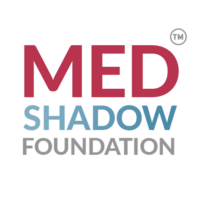Robert F. Kennedy Jr., Secretary of Health and Human Services (HHS), has floated an old idea as a new proposal – he wants to ban National Institutes of Health (NIH) scientists from publishing in major medical journals and instead create government-run publications to highlight their research. His rationale? The New England Journal of Medicine, JAMA, and The Lancet are “‘corrupt’ and publish studies funded and approved by pharmaceutical companies.”
Kennedy also called for significant changes if the NIH continues publishing in medical journals, but offered no clear guidelines, benchmarks, or goals for what those changes should entail.
While his proposal is vague, he’s not the first or only person to express legitimate concerns about pharmaceutical influence in medical publishing. However, his solution ignores a crucial historical lesson: After World War II, the peer review process (which had been in use since the 17th century) became institutalionzed because scientists wanted to “prevent the government from exerting too much power over the direction of research,” as STAT has reported.
Peer review was developed as a safeguard against government overreach. Returning the flow of scientific information to the government and allowing the government to be the judge and gatekeeper creates far worse problems than those Kennedy seeks to fix.
The System is Broken – But Not Beyond Repair
Pharmaceutical advertiser influence over editorial content is not a new problem. Having worked in advertising-supported print magazines as an ad salesperson and then a publisher/owner for 20 years before founding MedShadow, I lived with the compromise of choosing and editing articles with our financial viability in mind. The problem has not changed in the intervening years. In fact, in 2018, one major medical journal published a study describing how much pharma advertising impacted publishing decisions in its own journal and others. We’ve also seen patient advocacy organizations that accept pharma funding prioritize industry interests over their members’ needs.
Of course, the elephant in the room is that pharmaceutical companies do more than advertise: they play a dominant role in sponsoring clinical trials because of their role in developing and commercializing new drugs. And while it’s been reported that studies funded by the pharmaceutical industry are significantly more likely to report positive outcomes compared to those funded by independent sources, bringing new medicines to market is a process widely considered too costly and too difficult to rely solely on public funding.
However, acknowledging these conflicts of interest in funding and advertising doesn’t mean the entire system is broken beyond repair and should be chucked out.
Government-Controlled Journals Won’t Lead to More Transparency
The current system’s strength lies in its peer review process. Every research paper accepted by major journals undergoes rigorous scrutiny by two or more qualified experts who review the work anonymously. These volunteer reviewers examine everything: methodology, data analysis, interpretation of results, and overall significance. Authors must satisfactorily address all concerns before publication. The reviewers don’t receive any payment or publication credit for this essential work.
I experienced this process firsthand when co-authoring a peer-reviewed article on pregnancy drugs and fetal health risks. (Jill Escher, Suzanne B. Robotti, Pregnancy drugs, fetal germline epigenome, and risks for next‐generation pathology: A call to action. Environmental and Molecular Mutagenesis, 19 March 2019 https://doi./10.1002/em.22288) The anonymous reviewers’ insightful questions and challenges significantly improved our final paper.
This rigorous scrutiny, conducted by experts independent of the journal’s editorial staff and the research authors, helps circumvent editorial bias and preconceptions. In my experience, the reviewers were blinded to the authors’ names and bios, which should be the norm, but is not.
Another strength of the current system lies in the multiple outlets available for scientific studies. Many prestigious journals demand the highest-quality research, creating natural incentives for rigorous standards. Because researchers have access to a variety of publication outlets, important findings still have opportunities to be published, even if they are rejected by one journal.
Government-controlled journals would eliminate this competitive pressure and concentrate publication decisions in the hands of political appointees — hardly an improvement over current concerns about industry influence.
Secretary Kennedy’s comments do not roll up to a fully developed plan. Given the issue’s complexity, a plan will need to start with a vision of what medical publishing should be, and create a detailed map to get us there. I wonder if, for example, Kennedy has considered whether the federal government should adopt its own independent peer review process for publishing its own work? Unfortunately, even a massive undertaking such as that would not solve the inherent overreach of government agencies selecting research topics and choosing what gets published — and what doesn’t.
This thorny, embedded issue of money influencing and even directing scientific inquiry is precisely why MedShadow has never accepted pharmaceutical advertising. Knowing that even the best intentions can be swayed when deep pockets are involved, we are dedicated to staying fully independent, funded only by donations. We also ask that all of our journalists, editors, Health and Medical Advisory Board panelists, and the experts we interview be conflict-free by prohibiting any financial relationships with pharmaceutical or supplement companies.
While Kennedy is right to highlight the flaws in the medical journal publication system, believing the government can resolve them through self-policing is, at best, overly optimistic — and at worst, historically naive.






